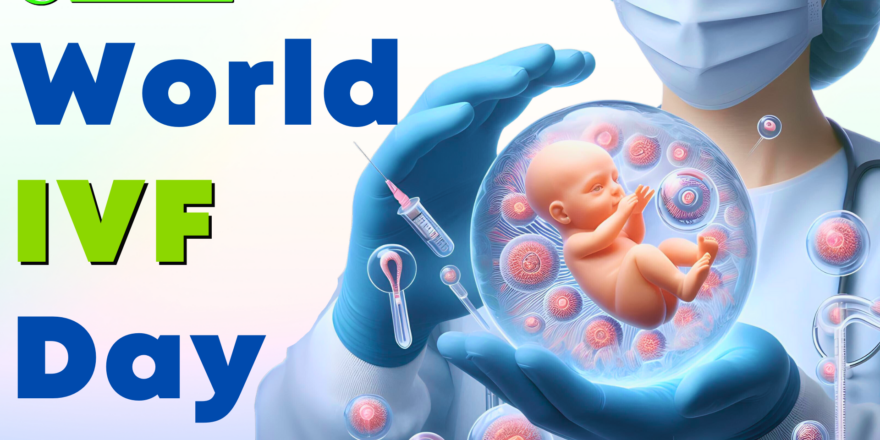A Journet through IVF History & Innovation
In the realm of medical marvels, few advancements have been as transformative as In Vitro Fertilization (IVF). This groundbreaking technology has not only redefined human reproduction but has also offered a lifeline to millions facing infertility. Imagine a world where the dream of having a child seemed out of reach, only to be brought to life by a small, ingenious glass dish. From the early experiments in the 1950s to the birth of the world’s first “test-tube baby” in 1978, IVF has journeyed through challenges, breakthroughs, and ethical debates, reshaping the future of parenthood. Let’s dive into the captivating history of IVF, exploring its milestones, the pioneers behind its development, the initial skepticism, and the evolutionary leaps that have made it the hope-giving technology it is today.
Milestones in IVF Development
The history of In-Vitro Fertilization (IVF) is a remarkable narrative of scientific breakthroughs, ethical debates, and the relentless pursuit of knowledge. From its inception to the latest advancements, IVF has continually evolved to offer new hope to countless individuals and couples facing infertility. This comprehensive overview explores the key milestones, current techniques, and cutting-edge innovations that have shaped and continue to transform the field of reproductive medicine.
Early Discovery and Challenges
The journey of IVF began with fundamental research in reproductive biology. In 1959, Austin and Chang discovered the process of sperm capacitation, where sperm acquire the ability to fertilize an egg. This discovery was pivotal, enhancing our understanding of sperm physiology and laying the groundwork for future IVF research. Despite this advancement, early IVF research faced significant challenges. Ethical concerns and skepticism from the medical community were pervasive. The concept of creating life outside the human body raised numerous questions about the morality and implications of assisted reproduction.
Major Developments in Technique
The 1960s and 1970s saw significant progress in overcoming these challenges. In 1969, British scientists Robert Edwards and Patrick Steptoe achieved the first successful fertilization of human oocytes in vitro. This breakthrough demonstrated the potential of IVF, yet it was met with both excitement and ethical controversy. Their perseverance culminated in a historic achievement in 1978 with the birth of Louise Brown, the world’s first IVF baby. This milestone proved that IVF could be a viable solution for infertility, transforming the field of reproductive medicine. Despite the success, ethical debates continued, with some questioning the implications of “test-tube babies.”
The World's Second IVF Baby and Further Progress
Shortly after the birth of Louise Brown, Dr. Subhash Mukherjee along with the embryologist (Prof.) Sunit Kumar Mukherjee, in India, made a significant contribution to the field by creating the world’s second and India’s first IVF baby, Durga (Kanupriya Agarwal), born just 67 days later in 1978. Dr. Mukherjee’s achievement was remarkable, but he faced severe bureaucratic obstacles and social ostracism, which prevented him from sharing his findings with the global scientific community.
The Visionaries Behind IVF
Surgeon Who Made It Possible!
Dr. Patrick Steptoe, a visionary gynecologist, revolutionized reproductive medicine with his expertise in laparoscopy, a technique essential for egg retrieval during IVF. His relentless pursuit of innovation and patient care made the dream of IVF a reality.
Transformed Reproduction!
Dr. Robert Edwards, a brilliant developmental biologist, dedicated his life to understanding human reproduction. His pioneering work in IVF earned him the Nobel Prize in Physiology or Medicine in 2010, solidifying his legacy as the father of modern reproductive technology.
Created India's first IVF baby!
Dr. Subhash Mukhopadhyay made history by creating the world’s second and India’s first child through IVF. Durga, born just 67 days after Louise Brown, marked a significant milestone.
Overcoming Skepticism and Ethical Hurdles
In the early days, IVF faced immense skepticism and ethical challenges. The concept of creating life outside the womb raised profound questions:
- Feasibility and Ethics: Many doubted the practicality and ethics of IVF, questioning the moral implications of creating and discarding embryos.
- Risks of Multiple Pregnancies: The potential for multiple pregnancies raised concerns about the health and safety of mothers and babies.
- Designer Babies Debate: The idea of selecting embryos based on traits sparked heated debates about the future of human genetics and ethics.
Media coverage, often sensationalizing the term “test-tube baby,” amplified public concerns, igniting widespread debates about the morality and future of assisted reproduction.
Dr. Subhash Mukherjee, born on January 16, 1931, in Hazaribagh, India, was a pioneering physician and scientist renowned for his groundbreaking work in reproductive medicine. Educated at Calcutta National Medical College and the University of Edinburgh, Mukherjee specialized in reproductive physiology and endocrinology. In 1978, he achieved a historic milestone by successfully conducting India’s first in-vitro fertilization (IVF) procedure, resulting in the birth of Durga (Kanupriya Agarwal) just 67 days after the world’s first IVF baby, Louise Brown, in the UK. Despite this achievement, Mukherjee faced severe bureaucratic hurdles and social ostracism from the West Bengal state government and the Indian authorities, which prevented him from sharing his findings internationally. The lack of recognition and professional isolation took a toll, leading to his tragic suicide on June 19, 1981. Years later, his contributions were posthumously acknowledged, underscoring his pivotal role in advancing reproductive technology and inspiring the acclaimed film “Ek Doctor Ki Maut” (Death of a Physician).
The Evolution of IVF Techniques:
1980s -The Shift to Transvaginal Oocyte Retrieval:
The introduction of transvaginal ultrasound-guided oocyte retrieval in the 1980s made the IVF process less invasive and significantly boosted success rates. This innovation streamlined the process, enhancing the comfort and outcomes for patients.
1980s - Advancements in Hormonal Treatments:
The development of sophisticated hormonal medications and refined ovarian stimulation protocols has dramatically improved egg production and IVF success rates. These advancements have been crucial in enhancing the efficacy and reliability of IVF treatments.
1992 - The Birth of ICSI - A game chenger in Male Infertility:
The introduction of Intracytoplasmic Sperm Injection (ICSI) in 1992 was a game changer, especially for couples facing male infertility. By injecting a single sperm directly into the egg, ICSI made fertilization possible even when sperm quality was severely compromised, expanding the horizons of reproductive medicine.
Advances in the 1980s and 1990s
The 1980s marked a period of technical refinement and innovation in IVF procedures. One notable advancement was the introduction of transvaginal ultrasound-guided oocyte retrieval. This technique made the egg retrieval process less invasive and more efficient, improving patient comfort and procedural success rates. Another significant development was the optimization of hormonal medications and protocols for ovarian stimulation. These advancements enabled the production of more viable eggs, thereby increasing the success rates of IVF treatments. In 1992, the introduction of Intracytoplasmic Sperm Injection (ICSI) revolutionized the treatment of male infertility. This technique involved injecting a single sperm directly into an egg, allowing for successful fertilization even in cases of severe male infertility. ICSI significantly expanded the potential applications of IVF, providing new hope to many couples.
Current Techniques and Their Advancements
Today’s IVF techniques are far more advanced and refined, benefiting from decades of research and technological innovation. Here are some of the current state-of-the-art techniques:
- Preimplantation Genetic Testing (PGT): PGT allows for the screening of embryos for genetic abnormalities before implantation. This technique can identify chromosomal anomalies and specific genetic disorders, significantly reducing the risk of genetic diseases in the offspring.
- Embryo Cryopreservation: The freezing of embryos at various stages of development allows for future use. Vitrification, a rapid freezing method, has improved the survival rates of thawed embryos, thereby enhancing the overall success rates of IVF cycles.
- Time-Lapse Imaging: This technology involves continuous monitoring of embryo development in an incubator, providing detailed information on the growth patterns of embryos. It helps embryologists select the best embryos for transfer, increasing the chances of a successful pregnancy.
- Laser Assisted Hatching (LAH): A technique where a small hole is made in the outer shell of the embryo (zona pellucida) to facilitate implantation in the uterine lining. This can be particularly beneficial for patients with previous IVF failures or older women.
- Ovarian Tissue Cryopreservation and Transplantation: This emerging technique involves freezing ovarian tissue for future transplantation. It offers fertility preservation options for women undergoing treatments that may affect their fertility, such as chemotherapy.
Latest Innovations in IVF
The field of IVF continues to evolve with cutting-edge innovations aimed at improving success rates and patient experience:
- Artificial Intelligence (AI) in IVF: AI algorithms are being developed to analyze data from embryos, predicting their viability with greater accuracy. This technology helps embryologists make better decisions about which embryos to transfer, potentially increasing success rates.
- Gene Editing: While still in the experimental stage, CRISPR and other gene-editing technologies hold promise for correcting genetic defects in embryos. This could lead to the prevention of hereditary diseases, although ethical and regulatory challenges remain.
- Personalized Medicine: Advances in genomics and molecular biology are paving the way for personalized IVF treatments. By tailoring protocols to the genetic and physiological profiles of individuals, the chances of success can be maximized.
- Microfluidics in Embryo Culture: Microfluidic devices are being developed to mimic the natural environment of the fallopian tubes and uterus, potentially improving embryo culture conditions and developmental outcomes.
At ANKURAM IVF, we truly understand the emotional and physical challenges that come with fertility treatments. We are more than just a clinic; we are a dedicated team committed to supporting you throughout your journey. We empathize with the dreams, hopes, and occasional setbacks that accompany this process. Our goal is to transform these challenges into stories of joy and success. Your dreams of starting or expanding your family are important to us, and we are here to help make those dreams a reality.
IVF has made remarkable strides since its early days, evolving from experimental procedures to a well-established and highly effective treatment. At ANKURAM IVF, we are at the cutting edge of these advancements, offering top-tier fertility treatments like Preimplantation Genetic Testing (PGT), Embryo Cryopreservation, and Intracytoplasmic Sperm Injection (ICSI). Our advanced techniques, such as time-lapse imaging and personalized medicine, ensure you receive the best care tailored to your unique needs. We provide thorough and clear information about each step of the process, empowering you with knowledge and confidence throughout your treatment journey.
Infertility can be a challenging and emotional journey, but it is one that we are committed to helping you overcome. At ANKURAM IVF, we specialize in addressing fertility issues with the latest and most effective treatments available. Our world-class infrastructure and state-of-the-art technology enable us to diagnose and treat a wide range of infertility problems. Whether it’s male infertility, recurrent miscarriages, or unexplained infertility, our expert team is equipped to provide the solutions you need. We also offer support services, including counseling and wellness programs, to address the emotional aspects of infertility, ensuring a comprehensive approach to your care.
Choosing ANKURAM IVF means opening the door to a future filled with hope and possibilities. Our affordable treatment options make advanced fertility care accessible to more families. Our high success rates are a testament to our expertise, but it is the personal stories of joy and new beginnings that truly highlight our impact. Join the many families who have entrusted us with their dreams and experienced the joy of a healthy, happy baby. Take the first step towards your dream of parenthood with ANKURAM IVF. Contact us today to schedule a consultation and begin your journey towards creating the family you’ve always envisioned.
At ANKURAM IVF, we transform hope into life and dreams into reality. Let us be part of your story. Book an appointment with our experts today!





4 thoughts on “A Journey through IVF History and Innovation”
I’ve spent over three hours online today, but I haven’t found any article as interesting as yours. I believe it’s truly valuable. If all website owners and bloggers produced content like yours, the internet would be more beneficial than ever.
NY weekly I truly appreciate your technique of writing a blog. I added it to my bookmark site list and will
Noodlemagazine Very well presented. Every quote was awesome and thanks for sharing the content. Keep sharing and keep motivating others.
Noodlemagazine Hi there to all, for the reason that I am genuinely keen of reading this website’s post to be updated on a regular basis. It carries pleasant stuff.